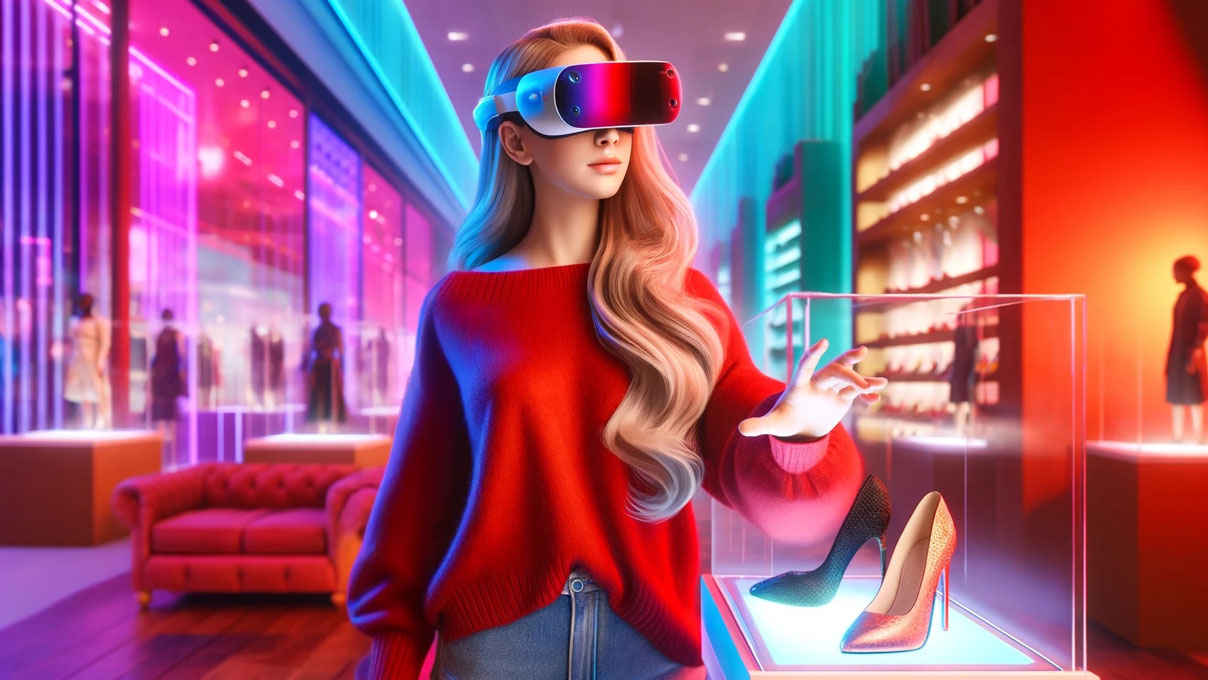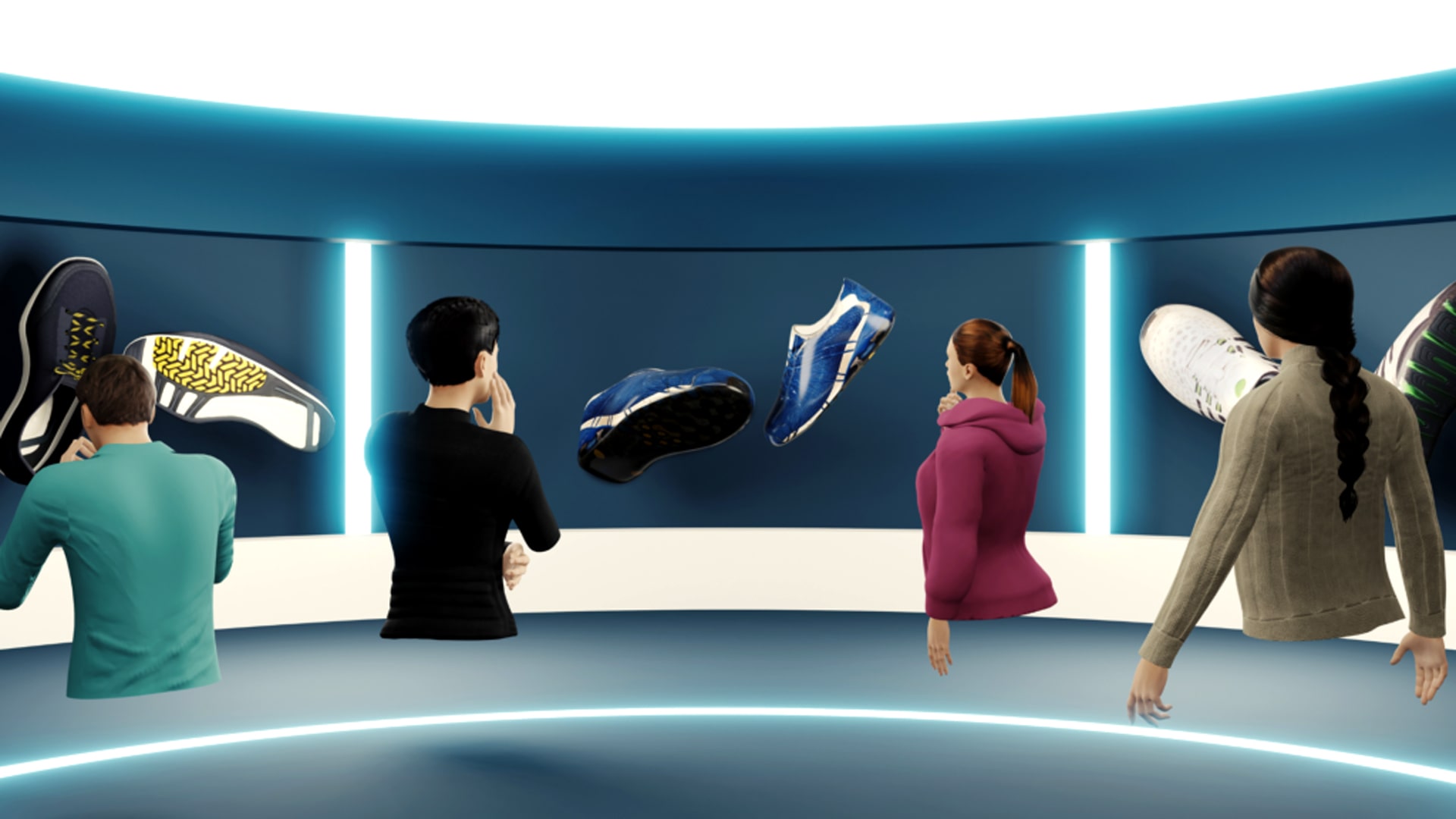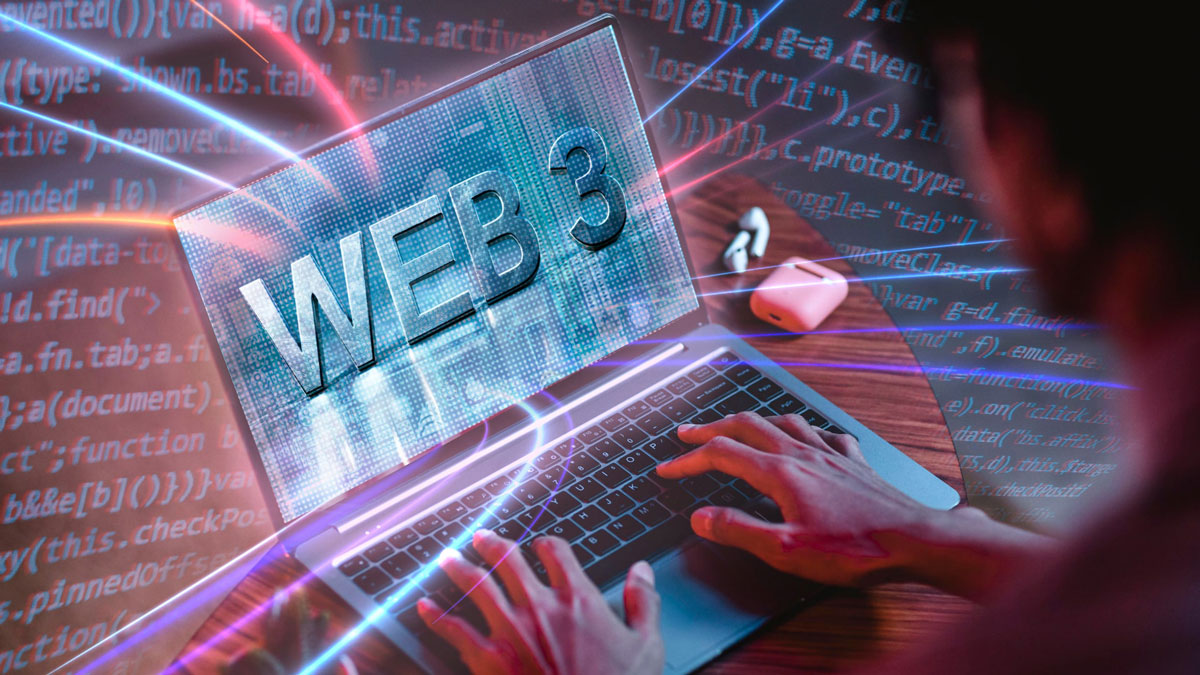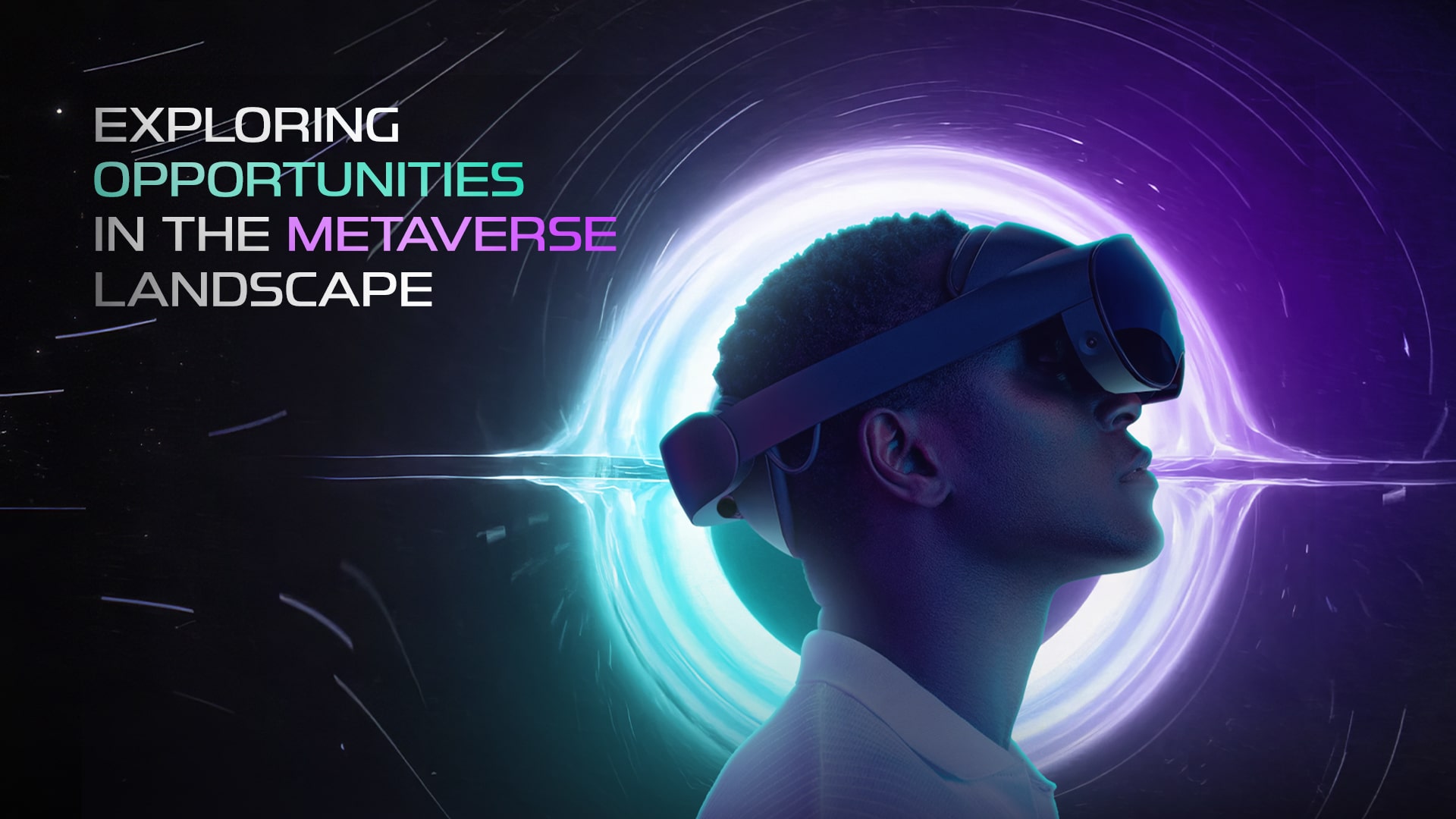
Let’s start with taking a quick trip to 2030. Here, we meet Alex, a Gen Alpha kid, who is getting ready for something classic yet thrilling: a date!
But in 2030, things look a little different…
A Digital Paradise
Alex picks out his outfit in the virtual world, choosing a sharp suit from Gucci that’s all digital.
His shoes? Virtual too, but they’re fancy Louis Vuitton, making his digital steps classy.
He’s not stopping at clothes. On his wrist, he sports a digital Rolex, showing off his sense of luxury in the virtual world.
And for his grand entrance? He’s got a sleek, virtual Ferrari.
Their date spot is a beach, but not just any beach—a virtual one where the sunset almost feels real.
They plan to enjoy a digital Champagne picnic there, surrounded by a beautiful, computer-made view.
Alex is all set to impress his girlfriend’s digital avatar, in a place where it’s all about making special moments.
In this virtual future, it’s all about the names, brands, and the ideas behind them, because nothing is physical. Everything—the places they go, what they wear, and even their experiences— carries value based on the image it reflects about them.
It seems it’s the names and the identities they create that truly make each moment matter.
In the end, it’ll be all about the brand’s magic touch.
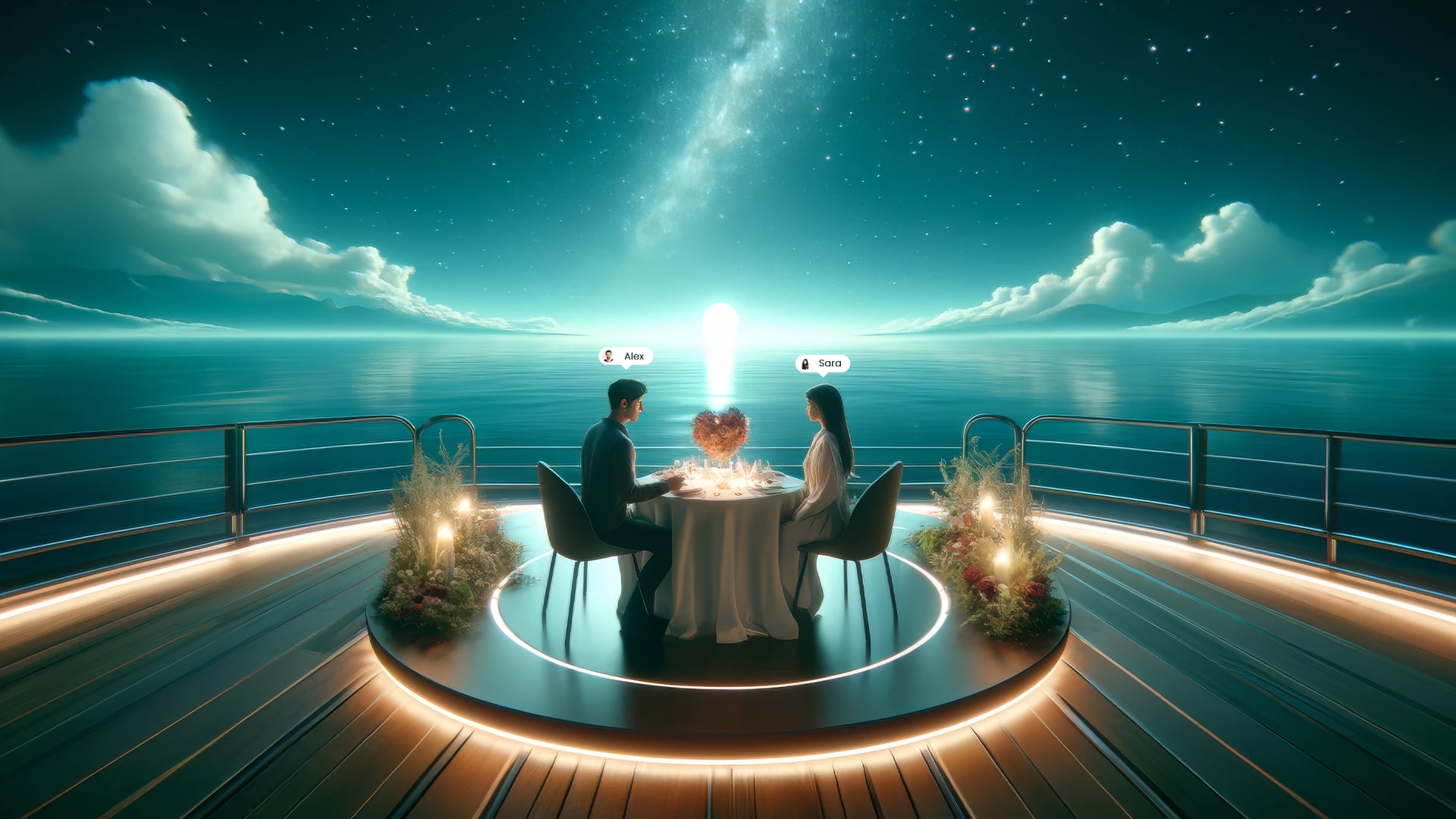
The Journey of Branding from Static Sites to Virtual Worlds
Since the 1990s, the internet has changed everything, starting with “Web 1.0.” Back then, websites were simple, mostly just showing information without letting users interact much. This was also when brands began to show up online, focusing on showing how good their products were.
Then came “Web 2.0”, with sites like Google and Facebook leading the charge. The internet became all about connecting with others, creating communities, and brands getting the word out digitally. This era made it important for brands not just to have great products, but also to be seen as cool or trustworthy. Nike is a great example: people love it for being stylish, comfortable, and high-quality. And it wasn’t just the big names that did well; smaller brands also found their place by offering high-quality, comfortable products.
Some brands even became known for the special vibe they give off – like Balenciaga for being cutting-edge or the cool factor of carrying a Starbucks cup. Owning an Apple product, like an iPhone or a MacBook, has become a symbol of innovation, and driving a Tesla is way more than just owning an electric car; it’s a statement about valuing sustainability and being part of the future of transportation.

Now, we’re moving into the era of the Metaverse and “Web 3.0”, which is all about virtual worlds and even more personalized online experiences. This is an actual time for brands to stand out by creating feelings and experiences, not just selling products. It’s not just about what they sell anymore, but about how they make us feel, offering unique experiences which eventually can make a brand truly memorable.
In the Metaverse, people are actually purchasing virtual goods and services, treating them with the same value as real-life experiences. From virtual dates and meetings to shopping and travel, the Metaverse has become a thriving hub for consumer engagement. As Yat Siu has said in his Ted Talk in April 2023:
“Last year, the video game industry generated over 100 billion dollars of sales in virtual goods.”
Is the Metaverse the New Dot-Com Bubble?
Despite some doubts surrounding the Metaverse, claiming it to be a quick trend or even calling it already “dead,” a closer look at the evolution of the internet suggests a different story. To understand the potential future of branding in the Metaverse, it’s crucial to examine the historical trajectory of Web3 and its ancestors, Web 1.0 and Web 2.0. Each of these web phases commenced with a burst of enthusiasm, encountered a period of suspicion or slowdown, and ultimately moved towards broader acceptance and integration into our daily lives.
Yes, the rise of Web 1.0 in the mid-1990s ended in the dot-com bubble, a period of speculative frenzy followed by a significant market crash. Despite this, the foundational web survived, stabilizing and growing into the necessary global information medium we rely on today.
Web 2.0, emerging around 2004, started a new era of interactive and social web, initially facing its own hurdles such as privacy issues and data control concerns. Yet, it eventually settled into the fabric of our everyday online interactions, reshaping how we communicate, work, and entertain ourselves.
Now, Web3, which peaked in interest around December 2021, seems to be following a similar path. IIInitially considered as the solution to the centralization and monopolization issues of Web 2.0, it initially rode a wave of hype, particularly around concepts like the Metaverse and blockchain technology. Although the initial excitement has seen a decline, perhaps due to the technical, regulatory, and adoption challenges it faces, this doesn’t necessarily signal its demise. Instead, history suggests that this cooling period may precede a phase of maturation and wider adoption.
Therefore, rather than dismissing the Metaverse as a bubble, it’s more productive to view it within the context of the internet’s evolutionary cycles. As history has already shown, Web3 and the Metaverse are likely in their developing stages, poised for transformation and growth. The future of branding in this space, then, could be vast, offering unparalleled opportunities for immersive experiences and interactions that we’re just beginning to imagine.

Ready, Set, Grow!
Heading into 2024, the metaverse seems to be hitting a bit of a speed bump, with its market value expected to dip slightly to $74.4 billion. This slight pullback isn’t alarming; rather, it’s a sign that the metaverse is still finding its feet, coupled with the broader challenges posed by the global economic downturn. But don’t let this temporary dip stop you; the trajectory for the metaverse is set to skyrocket, projecting a growth spurt of 37.73% annually from 2024 all the way to 2030.
This period of adjustment hasn’t prevented the tech giants from betting big on the metaverse’s future. Companies like Meta, Microsoft, NVIDIA, Epic Games, and Roblox are funneling billions into crafting the backbone the metaverse needs to flourish, from computing horsepower to network infrastructures, laying the groundwork for a digital revolution.
With advancements in AI tech and an economic rebound anticipated by 2025, the metaverse market is expected to explode to an astonishing $507.8 billion by the end of the decade. This growth isn’t just numbers on a page; it’s a golden opportunity for industries spanning retail, entertainment, and education to join the world of virtual goods, services, and brand-new advertising avenues. The metaverse is morphing into an everyday reality, redefining our leisure and work, offering a fresh lens through which to view our existence.
Now’s Your Moment
For those eyeing the metaverse, the starting gun has fired.
This isn’t a playground reserved for the industry behemoths alone. The metaverse is throwing open its doors to creative minds, whether you’re branding experts, creative agencies, or passionate individuals ready to carve out your virtual space. This emerging digital universe mirrors the early days of social media and Web 2.0, soon to become critical for engagement and innovation. Its current complexity and novelty create an amazing environment, specifically for agencies, adept at navigating these uncharted waters, helping brands and businesses find their footing.
Now’s the chance to get in on the ground floor of the metaverse, before it’s awash with competition. By entering this nascent space today, you’re not just joining the digital evolution—you’re actively shaping it. As it grows more crowded and competitive, standing out will become the real challenge. Instead of being a mere observer of this revolution, seize the opportunity to be at the forefront, crafting the future of digital interaction.

DaveFounder & CEO - Dream Farm Agency
